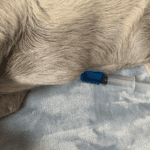Posts
“Endings Matter,” explains Dr. Kathleen Cooney. Veterinary patients, clients, and team members deserve to experience and deliver a peaceful euthanasia service each and every time. The veterinary team that takes…
Read MoreWith the recent trend of intraorgan euthanasia methods on the rise in animals as reported by the Companion Animal Euthanasia Training Academy (CAETA), I want to offer useful pointers on…
Read MoreThe Companion Animal Euthanasia Training Academy (CAETA) invites you to consider the following fictional euthanasia case and reflect on how to proceed. After reviewing the case, read the questions and…
Read MoreAs veterinary professionals, we are caregivers who shower love and compassion on others. With all you give to your clients, who is caring for you? It is within your control…
Read MoreEmotional Intelligence (EI) is a learned skill. Sure, some folks are born with a higher sense of self-awareness and the ability to perceive their surroundings, and social skills can be…
Read More“I’m Dr. Kathleen Cooney and I’m a Certified Peaceful Euthanasia Veterinarian.” This feels great to say and it’s been a long time coming. Over the years, many of you have…
Read More“Euthanasia is considered one of the most common procedures in veterinary medicine,” states Dr. Kathy Cooney, founder of the Companion Animal Euthanasia Training Academy (CAETA). You may be surprised to…
Read MoreFor many years, the Companion Animal Euthanasia Training Academy (CAETA), has taught the intracardiac euthanasia technique in one particular manner for companion animals. I’ll call it “the common way,” which…
Read MoreDo you feel there is an increase in pet euthanasia services over the holidays? If you do, you are not alone. I asked this question of Erin Bedell, one of…
Read MorePain has no place during euthanasia. By popular demand these days, pet patients are being given sedation medications to relax them into deep sleep before the administration of euthanasia solution,…
Read More










